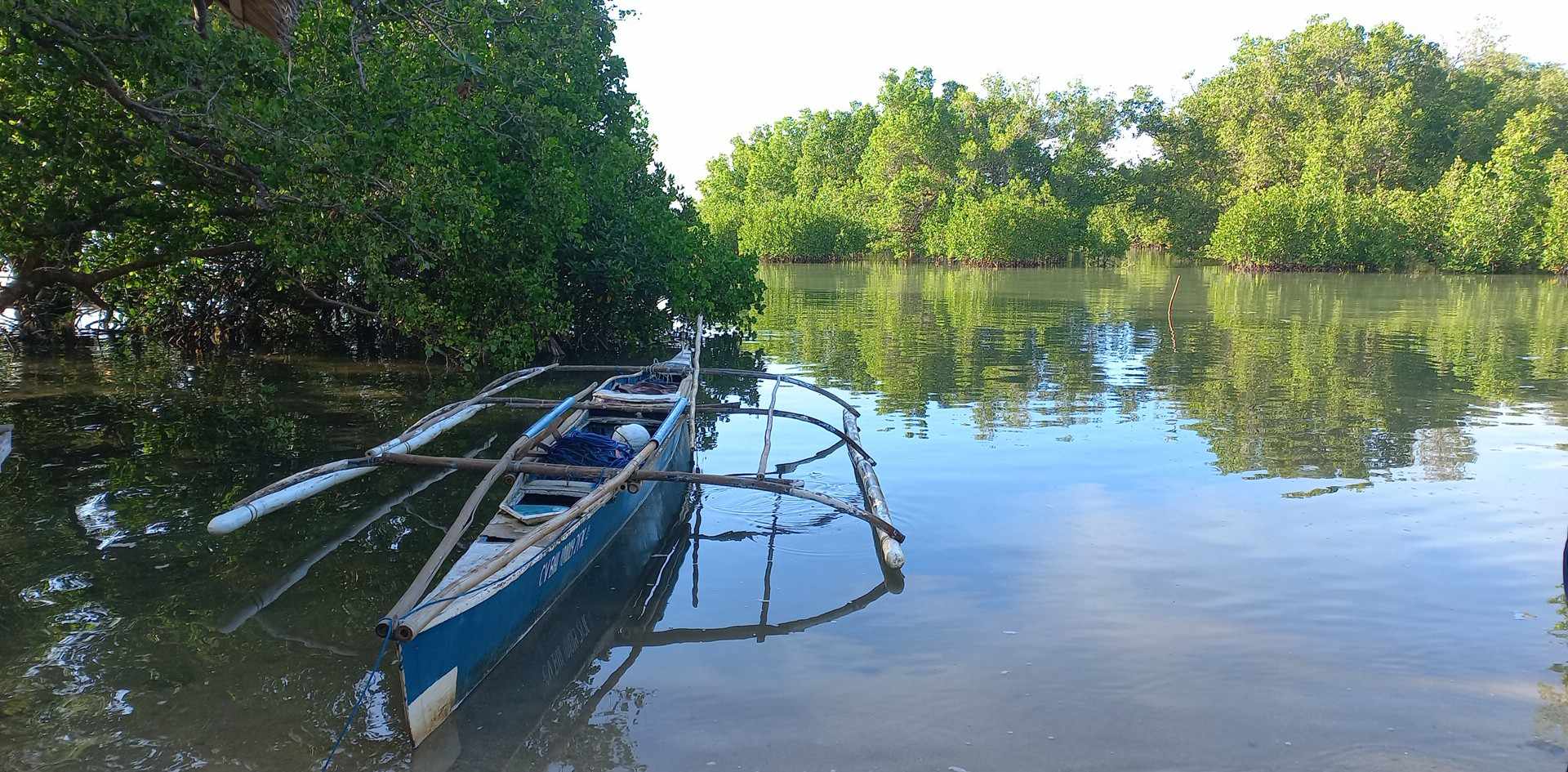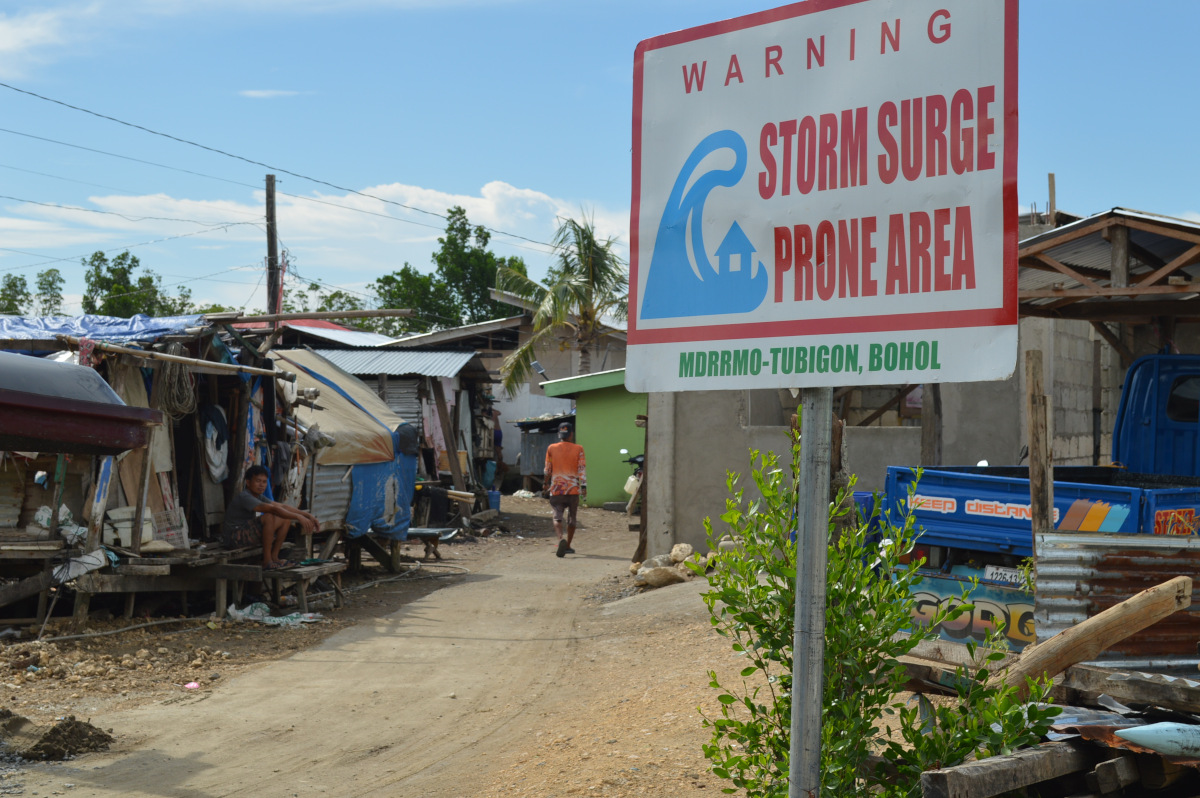Second of two parts
Badiang, Anda, Bohol. In the serene coastal village of Badiang, Anda, age-old traditions intertwine with modern conservation. Visitors walking along mangrove trails or venturing into the sacred caves of Lamanok Point quickly discover that eco-tourism here is more than just stunning landscapes — it’s about heritage, reverence and the enduring wisdom of the past.
“Here, eco-tourism isn’t just about nature. It’s about stories, spirits, and a deep-rooted belief that the sea is both provider and protector”, says Anda Tourism Officer Ruvien de Guzman.
Lamanok Point is both a geological and archaeological site found on the northeastern portion of Bohol Island in the Anda Peninsula. Facing the Bohol Sea, it is defined by a cluster of limestone karst formations and outcrops and is underlain by massive to rubbly limestone deposits from the Carmen formation with paleontological samples dating from the lower to Middle Miocene faunas. (Faustino et. al., 2003)
Since the 1970s, archaeologists have identified several caves in Lamanok as burial sites (Tenazas, 1973; Ronquillo, 1985) yielding human remains, ceramics which are mostly earthenware with few pieces of trade-ware sherds, and wooden boat coffins. Tenazas discovered hematite paintings on rock shelter panels that display abstract figures and what appears to be finger smudges.
A Culture of Stewardship
The Lamanok Archaeological Complex that lies adjacent to the Badiang Fish Sanctuary, a marine protected area (MPA), is not just a geological wonderland. It is a living testament to the fusion of ancient ritual and ecological mindfulness. Considered sacred ground for shamans, the site is now the centerpiece of a community-led eco-tourism initiative guided by both heritage and sustainability.
What sets Badiang apart, says Villa Pelindingue of the Bohol Provincial Environment Management Office (BPEMO), is how it fuses modern conservation with ancient tradition. By integrating cultural practices into marine management, the community achieves a sustainable system that respects both nature and belief.
The community’s belief in guardian spirits in the environment leads to a stewardship relationship with the ecosystem, and makes protection effective and sustainable in the area, she explains.
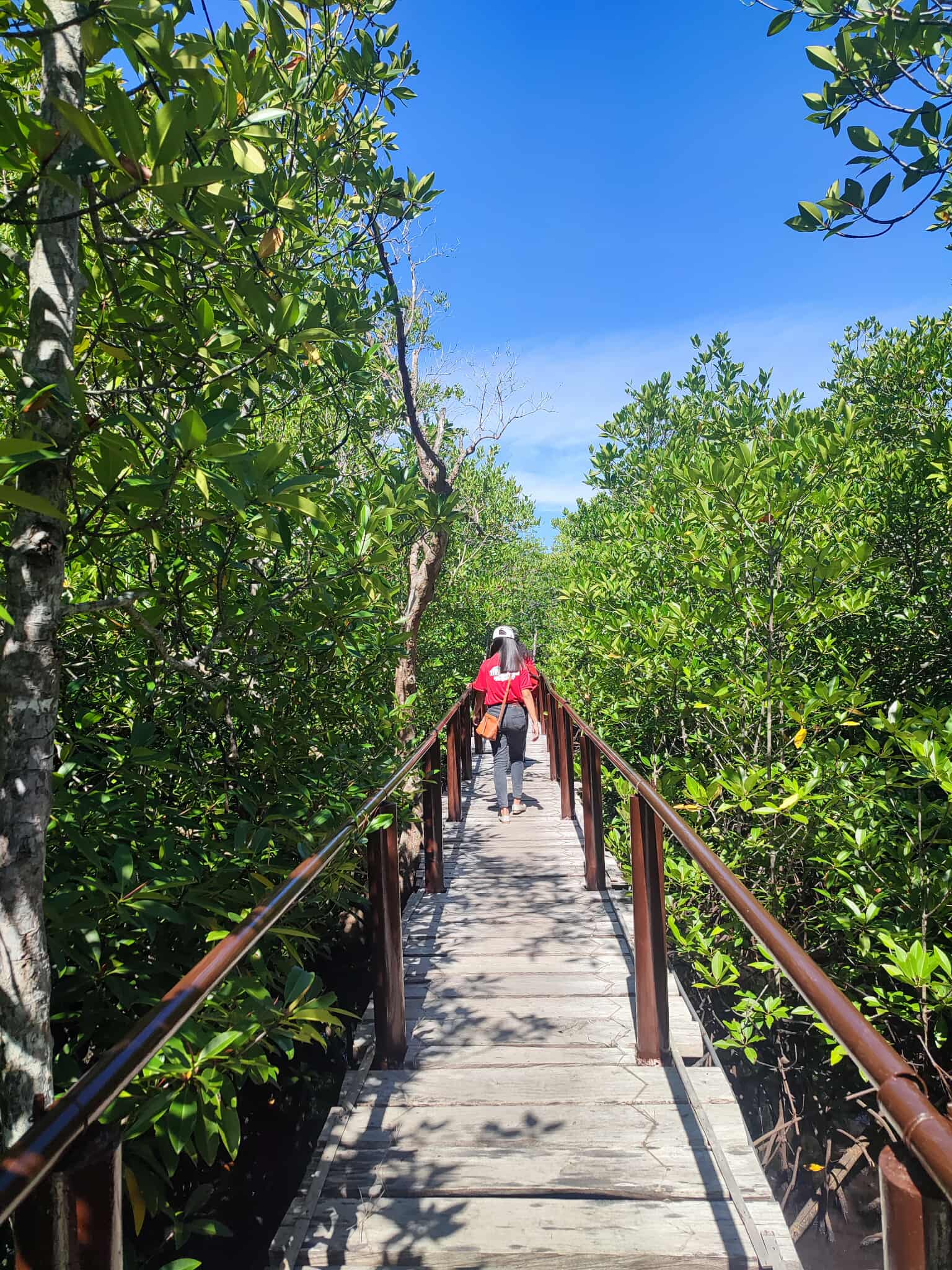
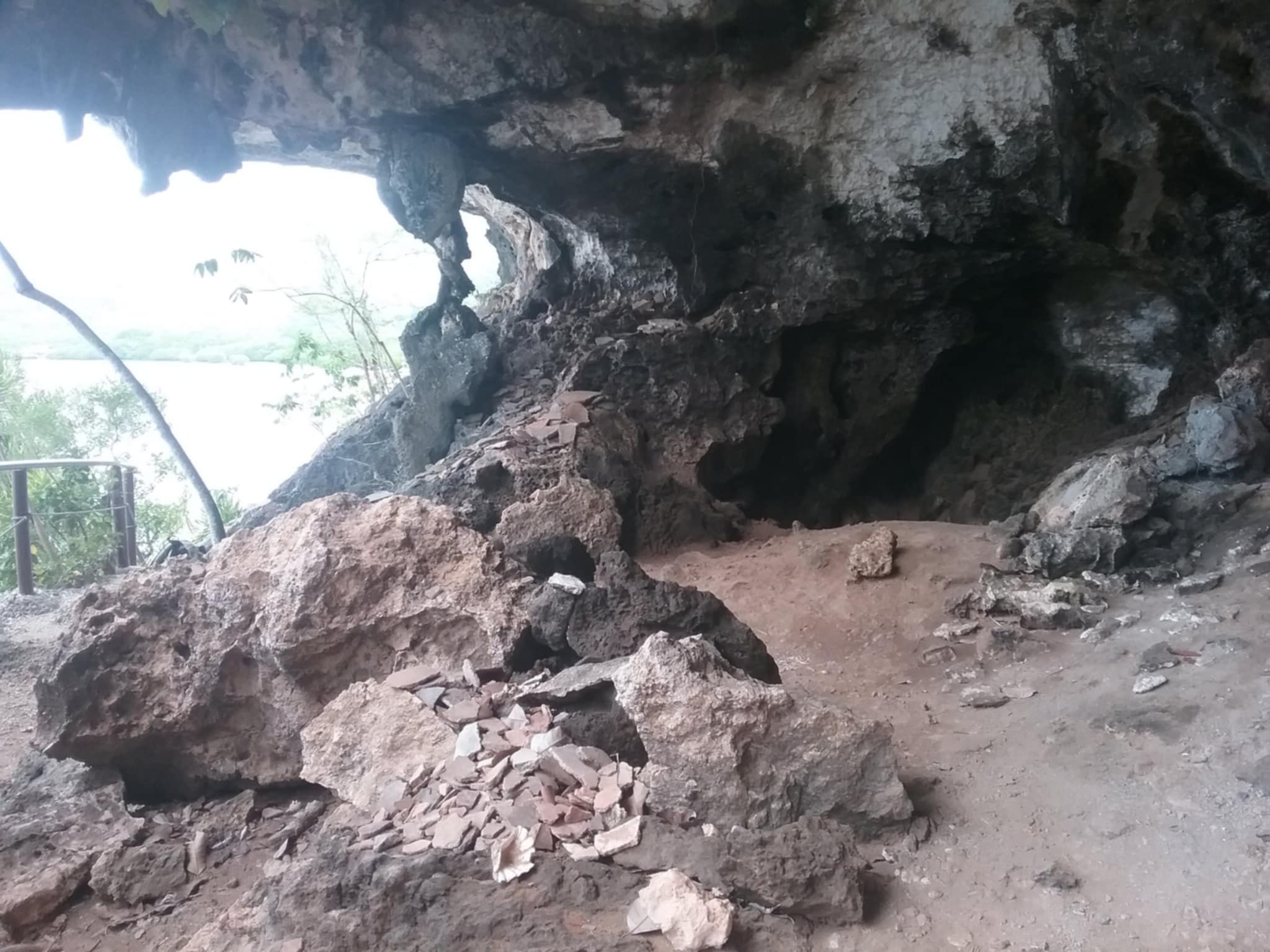
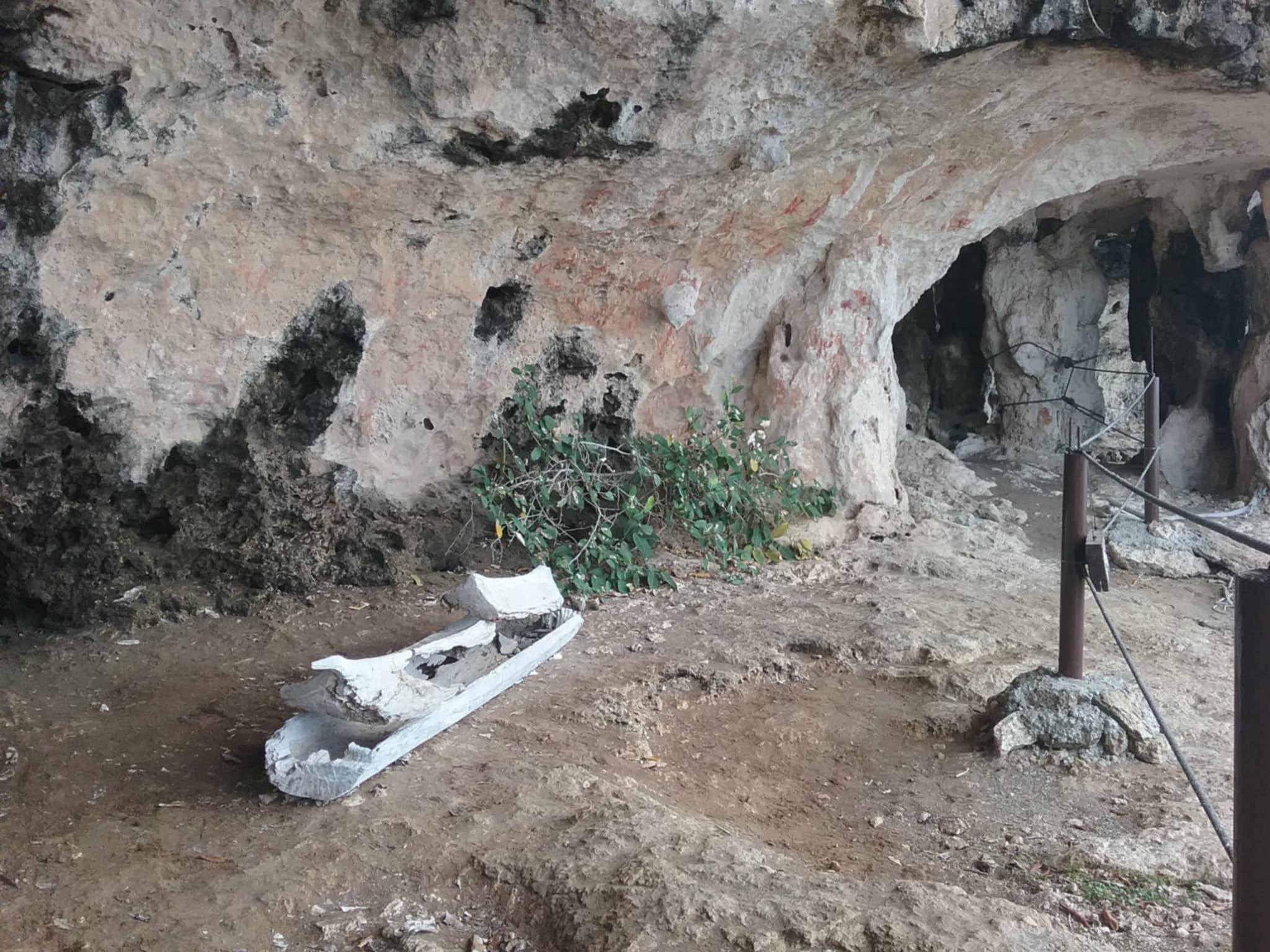
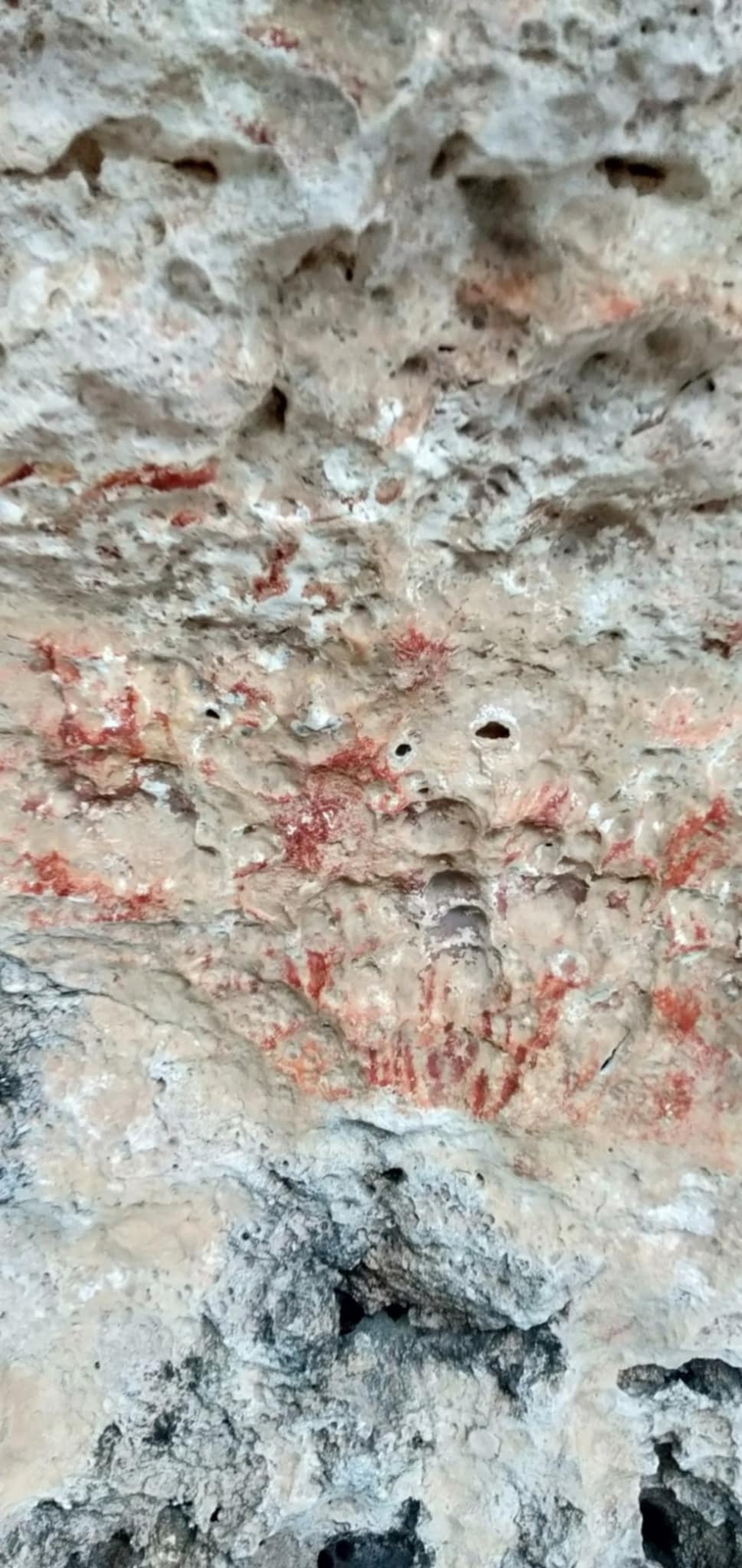
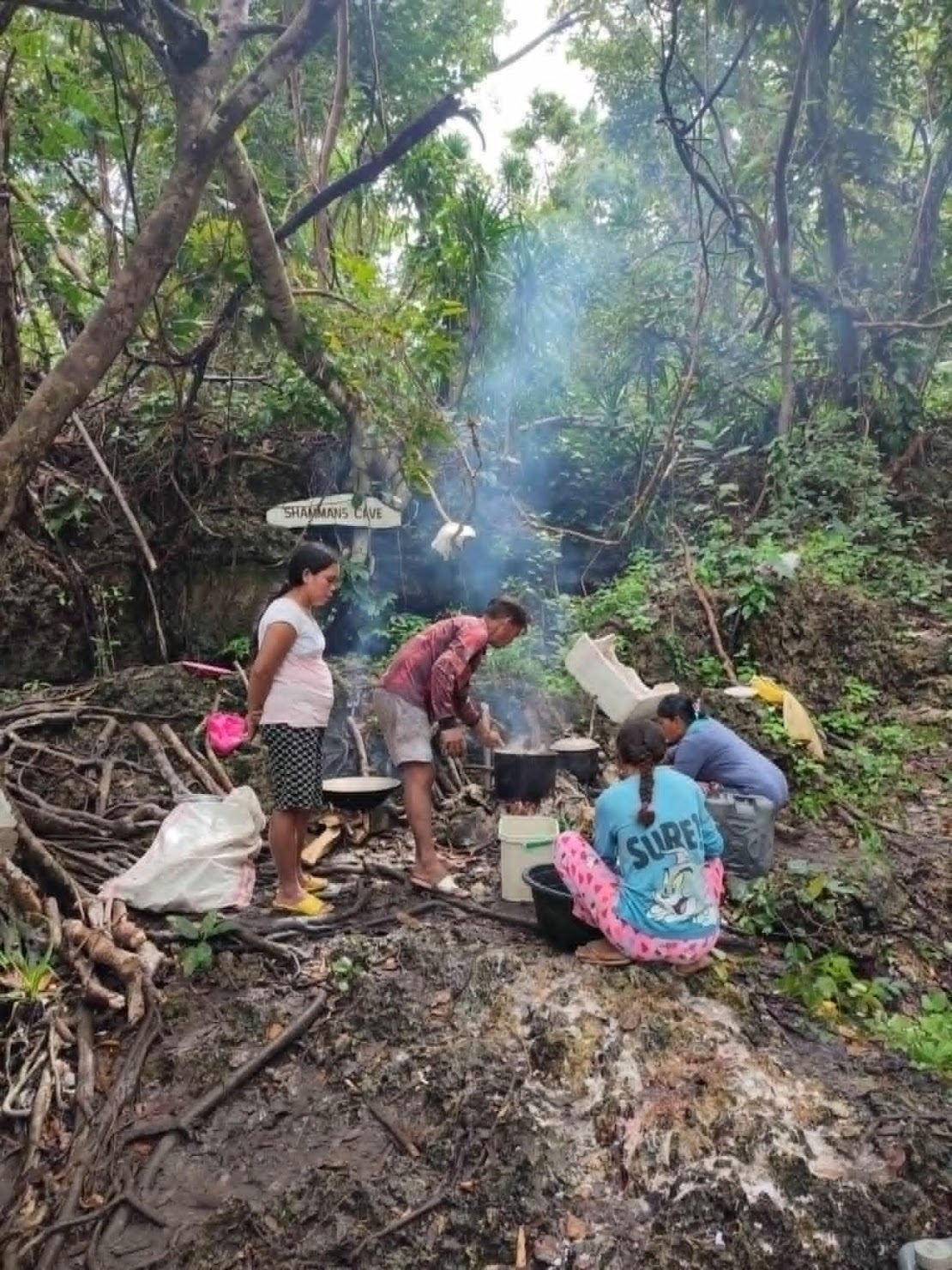
Photos by Cooper Resabal and Athena Vitor
Visitors go through a 500-meter boardwalk within a mangrove forest and are welcomed by tour guides at the BAFIAS cottage—many of them former and current fishers—who speak as easily of coral reefs as they do of spirits believed to inhabit the sea, forest and caves.
Their tales are not mere folklore but form the very fabric of conservation awareness, says Athena Garcia-Vitor, Team Coordinator of the Lamanok Heritage Management Initiative (LAHMI).
“These stories are not just tales,” explains a woman guide, gesturing to red ochre petrographs on a rock shelter. They remind us to be humble. The sea gives, but she can also take away.”
The guests are taken on a short banca (canoe boat) ride from the BAFIAS wooden port area to the Lamanok point where they walk and make at least six stopovers while on the island for one to two hours.
Spiritual Beliefs as Ecological Guidelines
According to Rachelle Lacea of the National Museum Philippines-Bohol, communities surrounding Lamanok view themselves as stewards of the environment and marine resources. “Their cultural and spiritual ties to the sea shape a deep sense of responsibility,” she notes.
Belief in dili ingon nato—spirit beings said to guard the environment—is widespread, Garcia-Vitor explains. “These spirits are thought to protect particular areas or spaces. Shamans they call tamba’an perform rituals asking for healing, good catch, or to appease them.”
The shamans say they offer food to ancestral and nature spirits, not evil spirits, to ask for protection. They even combine prayer with Catholic undertones. While many are Catholics, some maintain animist beliefs they got from their ancestors.
These rites often align with ecological logic. Fishing restrictions—such as seasonal bans during fish spawning periods from September to December—mirror marine science. “These are traditional prohibitions that directly support ecosystem health,” says Rene Ponte, a conservationist writer from Loon town.
From Sacred Sites to Eco-Tour Stops
Tourism at Lamanok Point led by the Badiang Fisherfolk Association (BAFIAS) includes six “stopovers” from the Tangob Cave and its legendary “royal gatherings” to the prehistoric petrographs and the Shaman’s Cave. At each site, oral narrative weaves seamlessly with science and conservation.
“These aren’t just tourist spots,” says Gonzalo “Saloy” Gultia, a BAFIAS tour guide. Each stopover place, he says, tells a story of their ancestors—and their duty to protect the land and sea.
Some sites like the ancient graveyard cave with boat coffins, still bear ceramic sherds and human bones—evidence of long-standing reverence for the ancestors and the land.
Visiting archaeologist Iman Nagy of University of California, Los Angeles (UCLA) notes that the red-stained and white rock art of abstract images and seeming finger smudges, made with hematite and calcite gypsum mixture (J.D. Mello, 2018), “offer a record of early Boholano life—ritualistic or symbolic, we may never know fully. But what’s important is: they left a mark.”
Some residents of communities near the Lamanok Complex used to believe that the red-ochre resembling finger smudges on the cave shelters were animal blood mixed with some plant and tree sap used during rituals by their ancestors, now bequeathed as heritage, says Fortun Simbajon, one of the original local tour guides.
Tourism and Local Livelihood
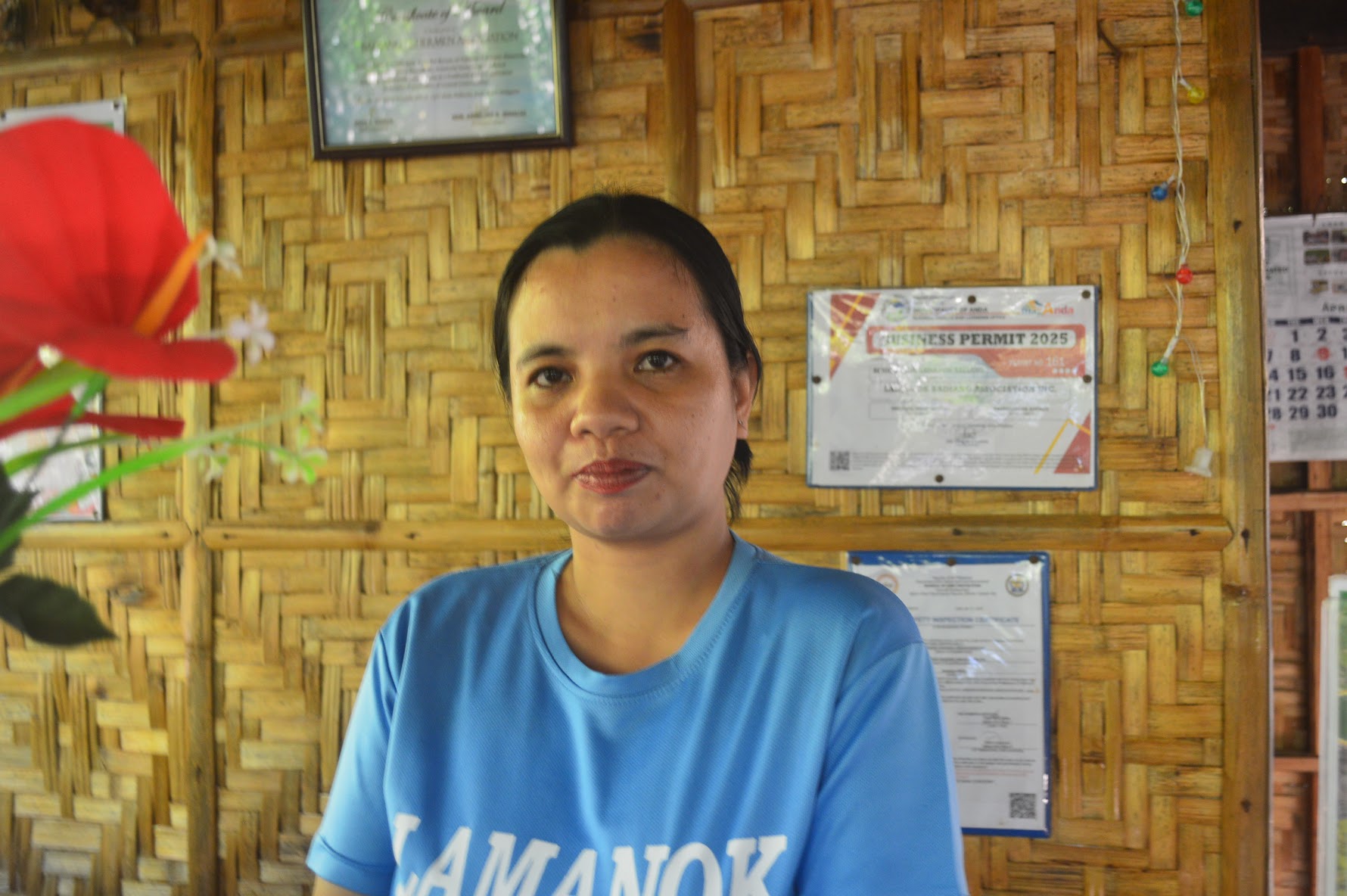
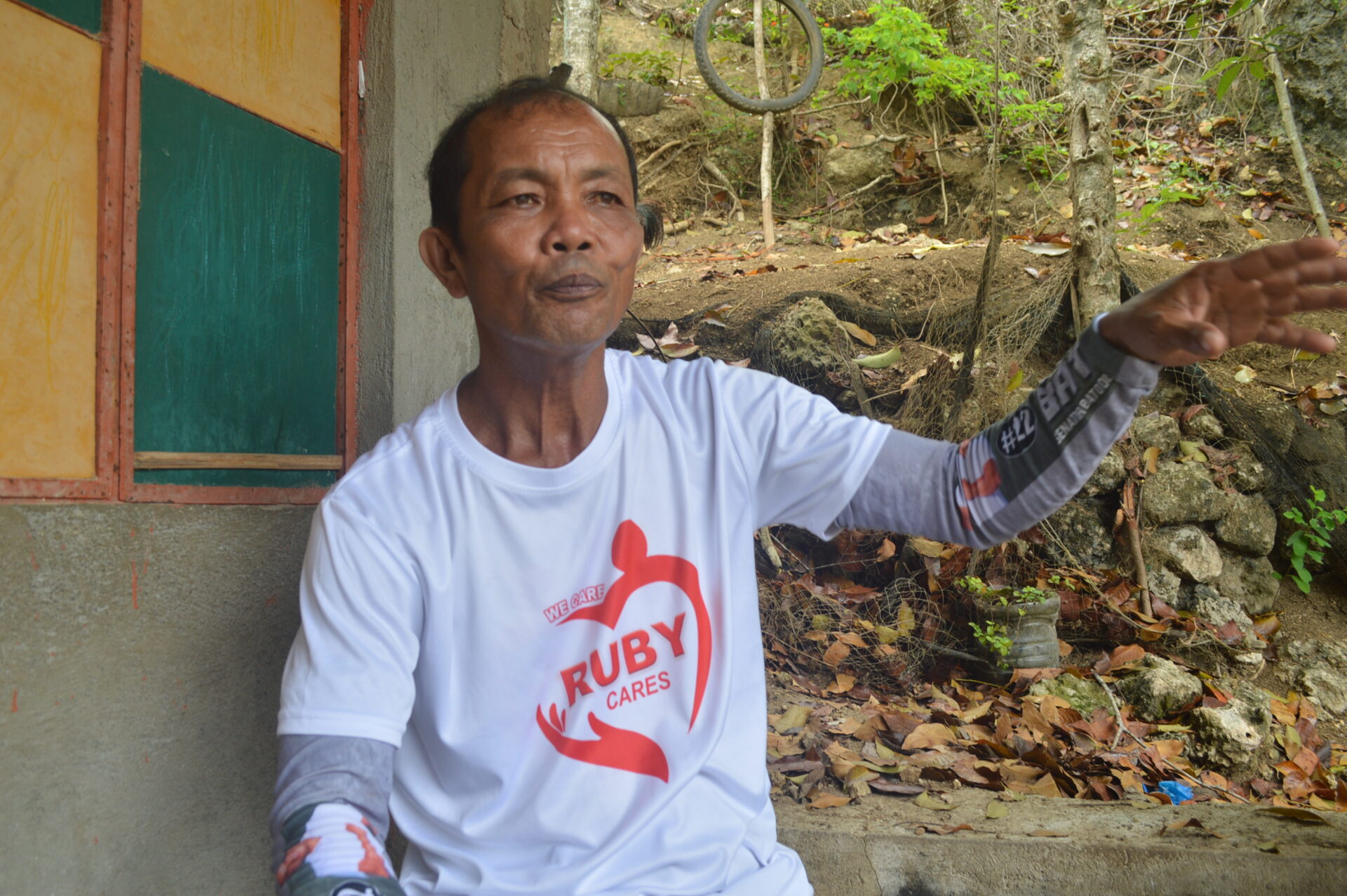
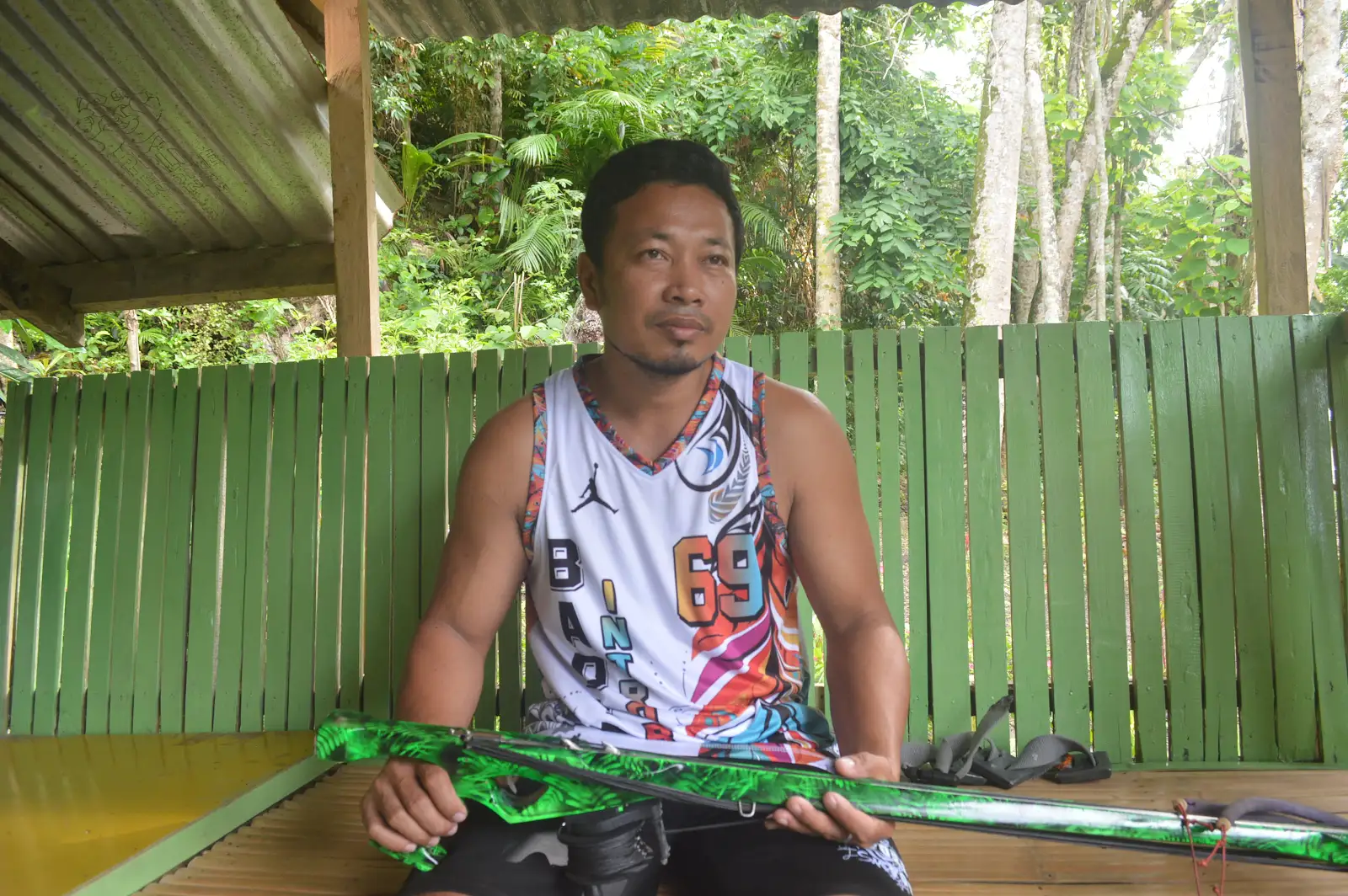
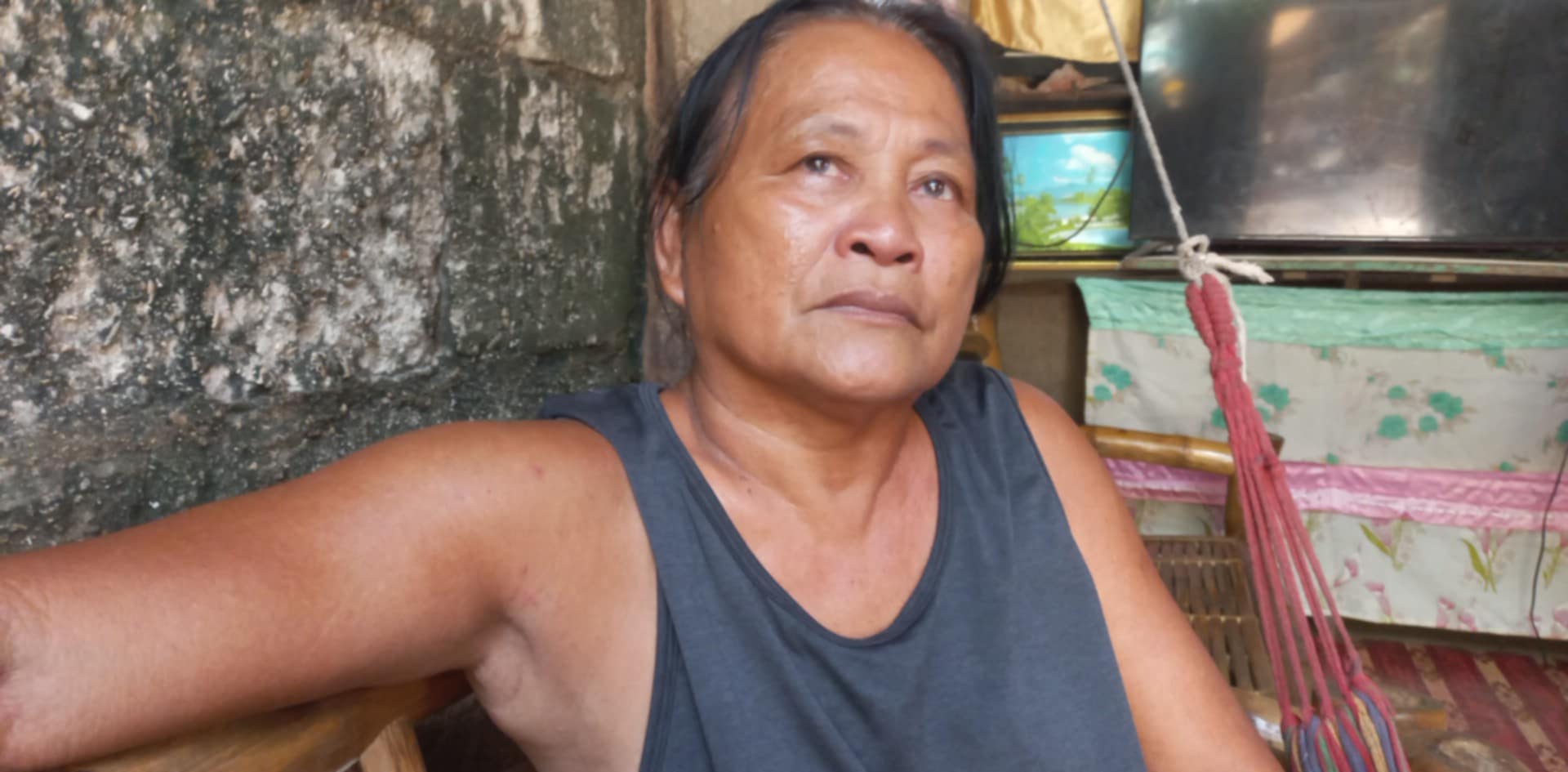
Photos by Cooper Resabal
Before tourism, most of Badiang’s 1,455 residents relied on fishing, farming, and carpentry, the Ecosystem Research and Development Bureau (ERDB) reported. The eco-tourism venture, supported by the local government’s tourism office and environmental agencies, now offers an alternative livelihood.
“In the past, residents didn’t dare enter Lamanok without a tamba’an,” says Saloy. “Now they lead tours—but with reverence.” The tamba’ans or shamanic healers act as mediators between the communities and the ancestral and nature spirits during rituals, says Amy Berdera, resident of nearby Amontay, Linawan.
Simbajon narrates that when he brings tourists to the caves, he can feel the presence of unseen spirits and this makes the hair on his neck stand. He says he just reminds his guests to ask permission from the spirits and allow them to look at their place. He also warns them not to take any artifacts or plants like orchids with them.
According to BAFIAS secretary Tabitah Pingol, visitor numbers have grown steadily, from just five to 10 a day in 2015 to an average of 20 daily in early 2025, majority of whom come from Europe.
An ERDB study set a cap of 97 visitors daily for the mystic tour and 48 for the mangrove trail, ensuring the area’s ecological integrity. “We’re careful not to exceed the carrying capacity,” Pingol affirms. “But we can take as much as 40 guests in a day in two batches of 20 each.”
Rules for visitors are strict: no touching of rock paintings or stalactites, and voices must be kept low. “These aren’t just artifacts,” says Simbajon. “They’re part of a living tradition.”
Marine Protected Areas and Traditional Fishing
Fisherfolk like Dario Gultiano, BAFIAS head, still use artisanal methods: hook and line (pamasul), fish pots (bobo), spear fishing (pamana), pukot or net fishing (pamadlas) and panginhas or gleaning.
The establishment of MPAs has not only improved fish density but also provided clearer fishing seasons and zones, benefiting both subsistence and tourism-based livelihoods, Gultiano observes.
“Many communities (in Bohol) manage their own sanctuaries,” shares a marine ecologist. “Some even guide sports fishers or offer snorkeling trips—all while using passive, traditional gear that minimizes damage.”
Rey Duran, 38, is one among ten spear fishers in Badiang who operates independently. He dives nightly, guided only by a headlamp and his own hand-crafted gear, catching up to four kilos on clear nights. Though not a BAFIAS member, he acknowledges the sanctuary’s benefit: “The fish I catch grew in protected waters.”
At sunrise, two fishermen walk through a pathway lined with mangrove trees in Badiang village to check their “baroto” or canoe boat and “pukot” (fishnet) for net-fishing locally called “pamadlas,” the most common way of fishing in Anda.
Mancio Ligutan unties and starts maneuvering the boat with his cousin Fernando toward a mangrove forest passage to the sea where they lay the 1,200-meter fish net on the buffer zone waters of Badiang Fish Sanctuary, a marine protected area.
After some time, Mancio and Fernando started pulling the “pukot” which yielded some danggit (rabbitfish) caught in the net. They have to do this up to seven times to take advantage of very high tide which is conducive to good fish catch.
From fisher Rico Pitlo’s experience, the average fish catch these days for “pamadlas” after 6 to 7 times laying of fish nets during high tide in Badiang is 8 kilos of danggit and katambak (rabbitfish and snapper) and could reach up to 16 kilos on a good day.
Gleaning: Women, Food, and Dignity
At low tide, women and children wade across seagrass beds, gathering shells, urchins, and sea cucumbers—a practice known as panginhas or gleaning.
For many coastal communities in Bohol, gleaning is more than tradition. It is survival. Angela Berdera Boyore, 66, of Badiang recalls raising her three children alone through gleaning after the death of her husband.
“I tied myself to a boat when the tide was strong,” she says, tears in her eyes. “The shellfish fed my children. I never begged. I never gave up.”
Researcher Danila Kleiber (Generaquafish.org) notes that while gleaning is often overlooked in marine policy, it plays a vital economic role, particularly for women. It may not yield much cash, she writes, but it ensures food on the table.
Boyore, like others, respects sanctuary boundaries. “We stay at the edges. We don’t want to get fined,” she says with a smile.
But there are also enterprising women gleaners who bring what they have gathered from reef to market.
Mary Rose Deloso of Big-ot village, a mother of six, dries sea cucumbers (ba’at) and sells them for up to ₱1,200 per kilo. Her husband fishes daily while she gathers and processes the marine invertebrates. “Some buyers bring them to Mindanao,” she says, showing off her latest harvest.
Anchoring the Future in the Past

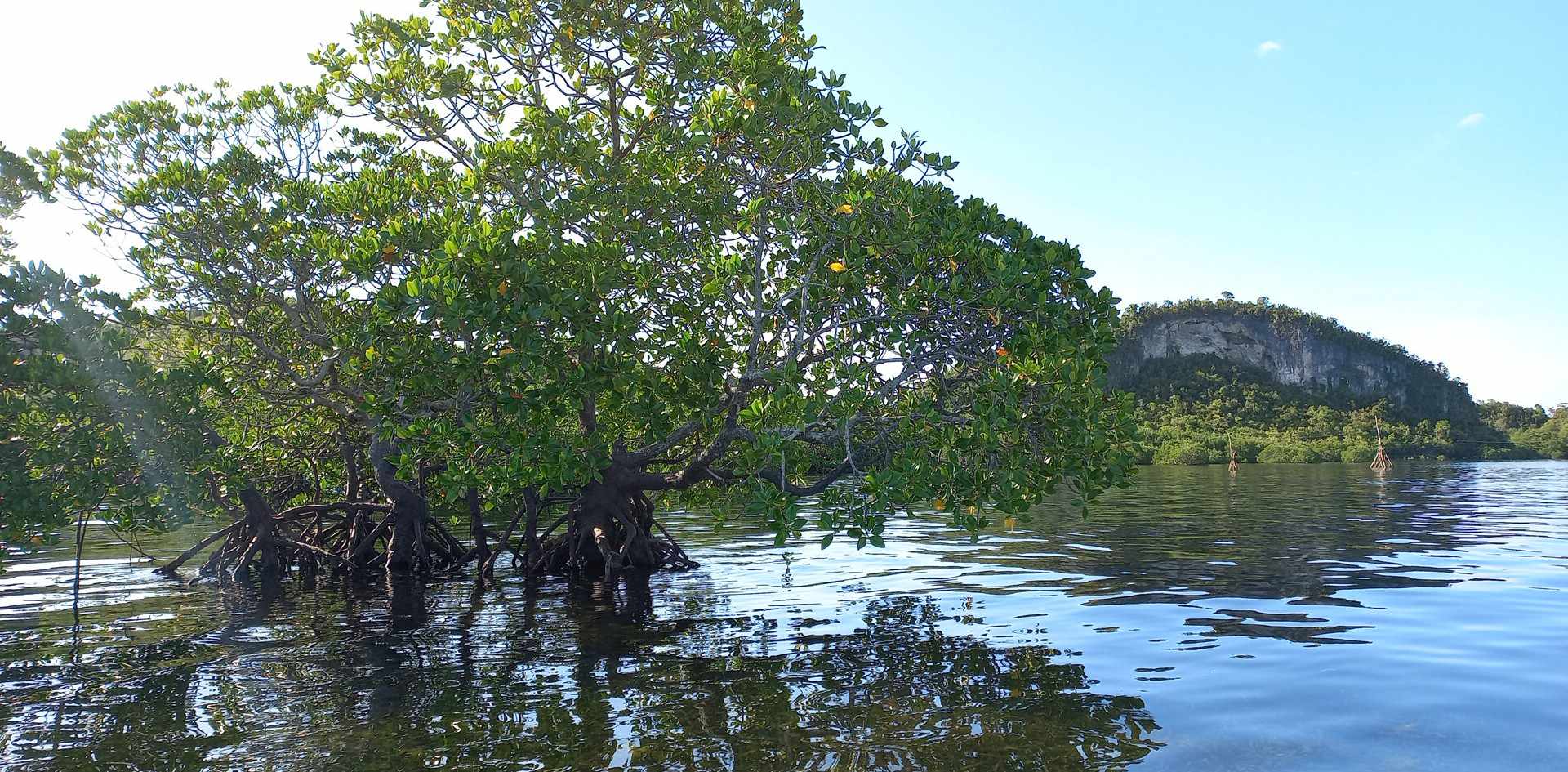
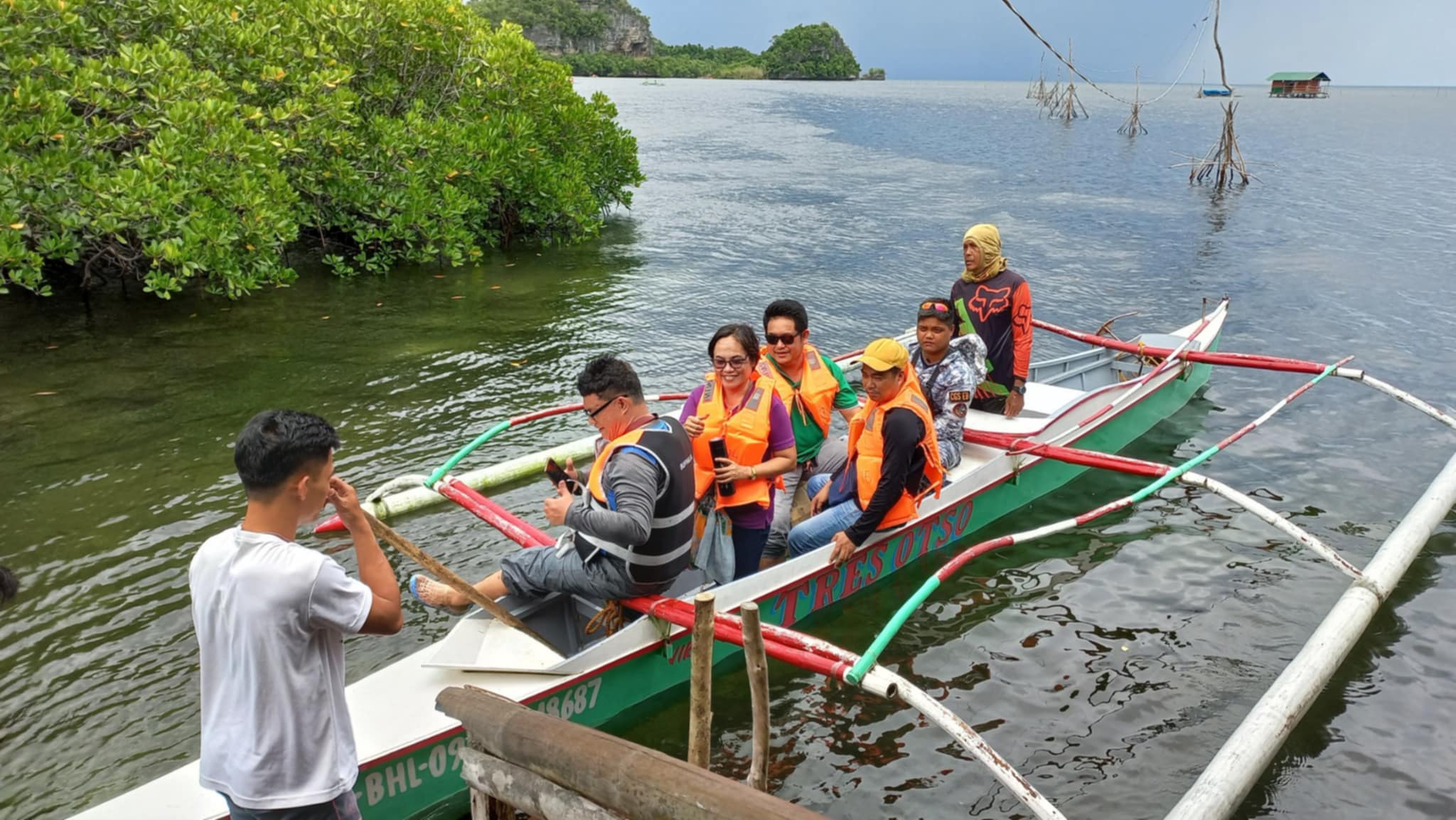
Photos by Cooper Resabal
In Anda’s Lamanok, conservation is not simply a policy. It is a worldview rooted in ancestral reverence. Whether through storytelling, ritual, or regulation, the community demonstrates how ancient beliefs can inform and sustain modern ecological practice.
“Our ancestors believed spirits lived in these caves and waters,” says de Guzman, who, when he was young, accompanied his grandfather to hold healing rituals at a cave in Lamanok Point. “Today, those beliefs remind us that nature deserves the same reverence.”
In his view, the practices of shamans in the sacred spaces of Lamanok reflect an enduring worldview that sees nature and the spiritual realm as interconnected and co-evolving.
Currently, Anda has some 70 tourism establishments — resorts, inns, homestays, pension houses – which are expanding to accommodate big events, de Guzman shares. “Many of the young who need work now find employment in Anda’s tourism establishments.”
There are monthly coastal clean-up drives by the youth and other volunteers, he adds. “We want our youth to be aware of the importance of protecting our marine resources, and our sustainable livelihood programs.”
But being true to the town’s vision, the tourism officer states: “We aim to be the province’s eco-cultural tourism destination. Anda’s market is different. We are for sustainable tourism. Let the others promote the wild kind of tourism. We want our guests to relax, far from the noise.”
As more visitors arrive, de Guzman says the challenge remains: to protect the very things they come to see and experience — not only the white sand beaches, caves and corals and healthy marine life, but also the cultural soul of the sea.
Gultiano, the BAFIAS head, says: “We are thankful we have this sanctuary so that our next generation can still draw from its resources. If we are gone from this world, we still have this as a legacy. If we don’t have this sanctuary, spawning fish will get disturbed, and they’re not able to reproduce. That’s what we have agreed: to keep watch over this common resource in this coastal area.”
Bohol Island province in central Philippines has a total of 47 municipalities and a city, 30 of which are coastal towns. Of the total population of 1.4 million (NSA, 2020), some 33% (or about 462,000) are directly dependent on the marine fisheries ecosystems for livelihood, either as full-time sustenance fishers and gleaners, or commercial fishers.
READ Part 1: From Decline to Revival: Anda, Bohol Communities Take Back the Sea
This story was produced with support from Internews’ Earth Journalism Network.
